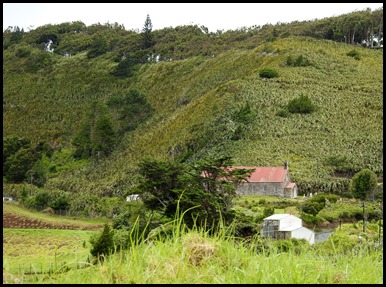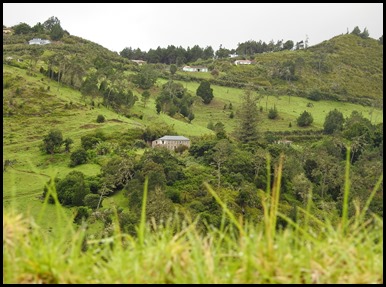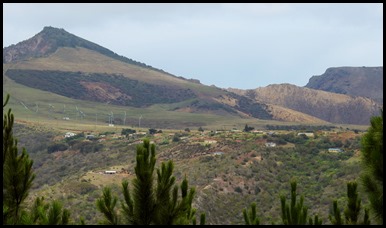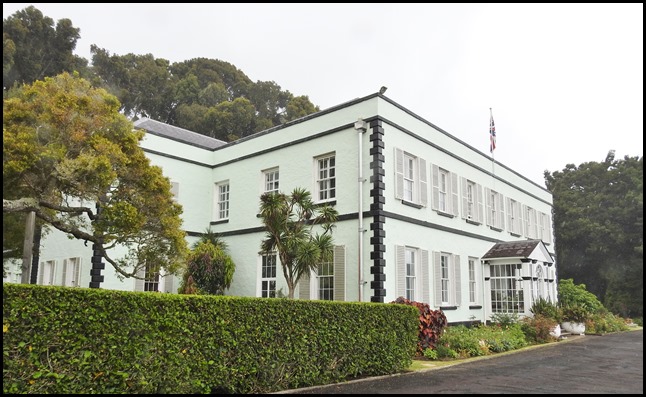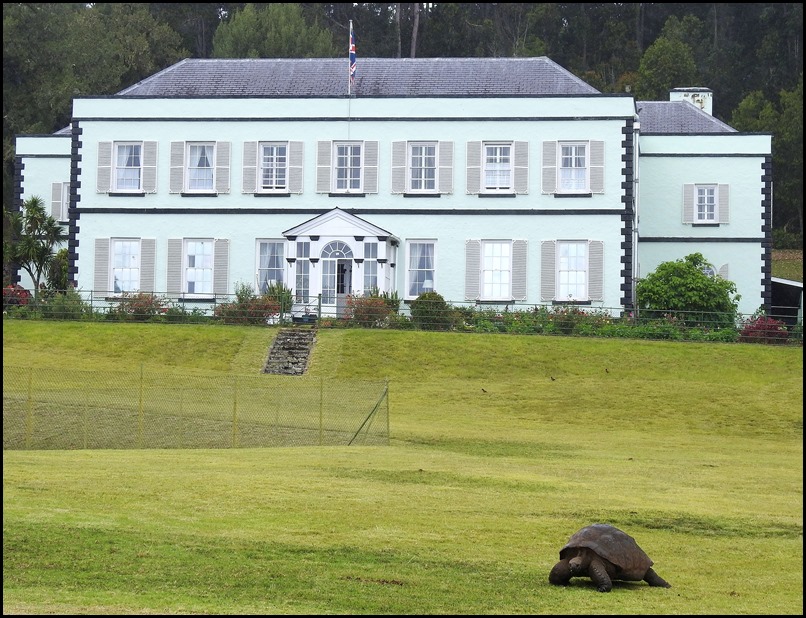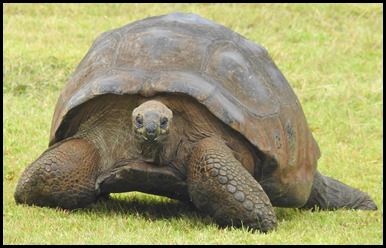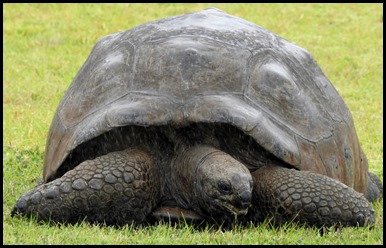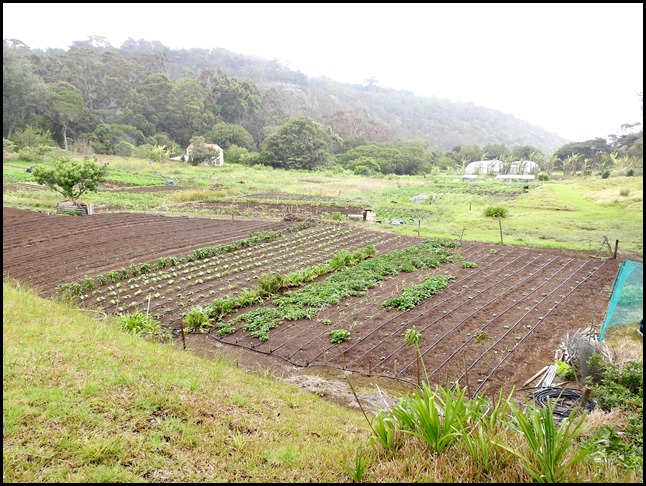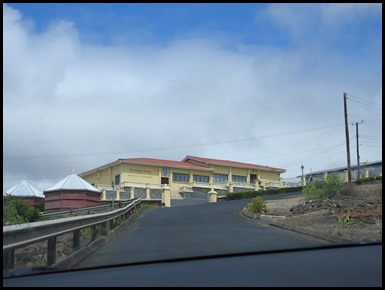Exploring St Helena by Car

|
Exploring St Helena by Car
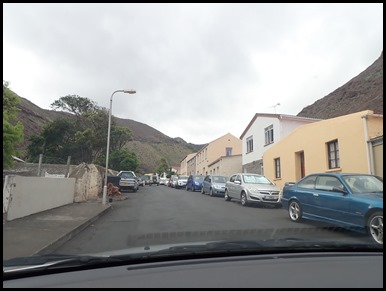 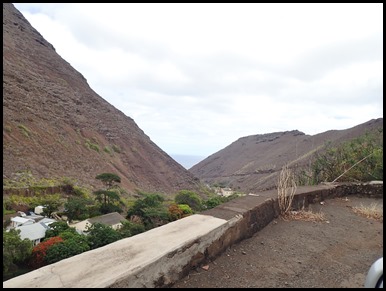 We took the eight o’clock water taxi
ashore and sat by the swimming pool entrance by a quarter past ready for the
hire car delivery. Nothing happened. At nine, Bear bimbled up to the Tourist
Office and one of the ladies rang to find the owner (lady) was nearby. Together
they came down to the quayside for me ‘to do the paperwork’ which was non
existent, not even to see if either of us had driving licenses......Her excuse
was running a tea shop and a restaurant in a hotel and she does the best she can
– wordy for island time..... We headed out and were soon
further than we had been in fine rain and then up our
first steep hill at the end of the valley en route to see Lionel at Half
Tree Hollow.
 Outside Lionel’s I got to stare at a couple of ‘One Careful Owners’ and closed my eyes in a
stupor of anticipation awaiting The Verdict. Bear returned after fifteen
minutes. Our old alternator had at some point overheated
and the windings inside had broken down. Then came the good news.
Lionel (trained at Plymouth Poly as it was then) has the
same output model off a car, with a different regulator system (internal) that
should do the job once I make it fit. Lionel also changed the pulleys from ours
to his. It will be ready, delivered to the pub in town this afternoon between
four and six where the boys get together every Friday for a pint. Cost one
hundred and twenty pounds. Huge relief and fingers crossed once
more. Now we could get on with our exploring the island and finding out some of
its history.
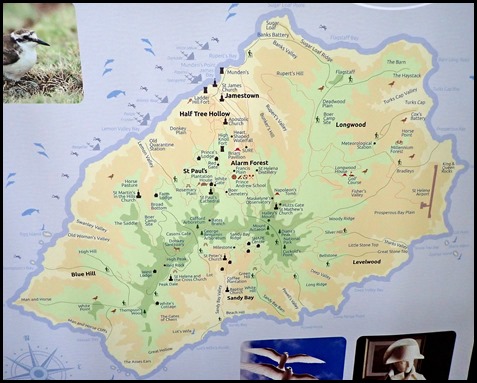 St Helena is
a tall island with little in the way of beaches. Most of the coast is
towering rocky cliffs backed by lush green slopes climbing up to the highest
spot on the island, Diana's Peak, at 823 metres. The climate is tropical, but cooled
by the SE trades, and the cold Benguela current from the Southern Ocean.
 The weather is warm and
occasionally humid (we have had fine to heavy rain each day), but it
varies within the island and it is sometimes foggy or misty at the higher elevations. Indeed it was.
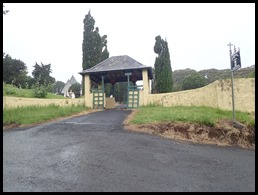 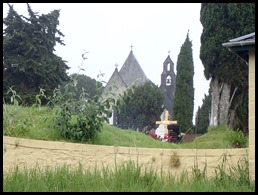 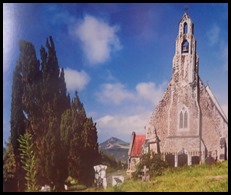 We headed straight for the Napoleonic sites (own blog) but
stopped en route outside St Paul’s Cathedral. The
rain was falling quite hard so the pamphlet picture
does it more justice than we could.
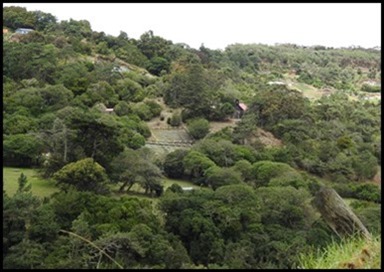   Looking across the valley toward the Boer POW
Cemetery. The island’s remote location meant it could be used as a
place of exile for key prisoners including some 6,000 Boers. The Boer Cemetery
and camp Knollcombes is the location of the graveyard of the Boer POW who were
imprisoned on the island between 1900 and 1902, during the Anglo-Boer War in
South Africa. The Boer POW camp was situated at Deadwood
Plain.
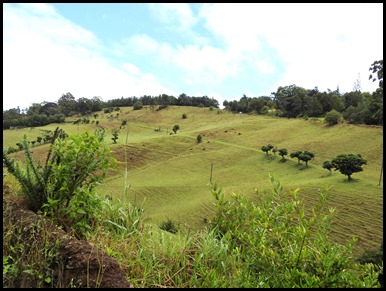 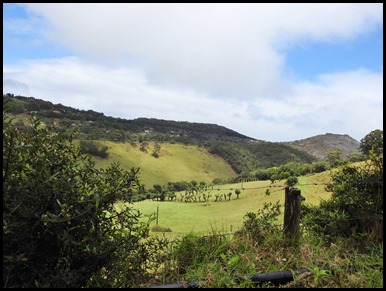
In this damp everything looked lush and green. On the far right of the second picture we could just make out High Knoll Fort.
Later in the day we would sit opposite the fort and get a zoomed shot of it. High Knoll Fort stands high above Jamestown, but cannot be seen from the town. It is a massive structure and a wonderful example of military defensive structures of its time. The views from different aspects of the fort across the island are magnificent and well worth the effort of walking around it. We chose not to in the rain and as it is I have had to brighten all these pictures from a dull grey....... The commencement of work is often attributed to Governor Brooke in 1790. However the major construction is likely to date from 1798. The tower sat unused but manned by a small garrison throughout the early 19th century. The island intended to drive all the sheep and cattle on the island into the gap between the forts at High Knoll and Ladder Hill in the event of an attack. The tower never saw enemy action but did play a major part in the 1811 mutiny. The mutinous troops demanded ‘full rations of spirit’ and threatened serious consequences if refused. 250 men managed to seize a high ranking officer but were captured before they reached Plantation House. Six of the ringleaders were hung at High Knoll, and the rooms in the barracks were used as a prison for the rebels. By the 1850s the buildings to the north were now occupied as a school and housing for slaves freed from captivity by the West Africa Squadron and many other buildings on the site were falling into ruin. The following sixteen years from 1857 saw a number of periods of construction, up to 1874 when the date stone in the main gate was laid. Much of the work was probably undertaken in the 1860s and some of the ditches use 18th century structures. By 1900 the fort was out of date as a defensive structure but was still useful as a remote and secure prison. The more recalcitrant Boer Prisoners of War, Transvaal Rebels and some of the Officers were held in the fort to keep them separate from the prison camps on Deadwood. There were some changes made to the fort during the Second World War, including repairs to the parapets, but little else has changed since the major building in the latter 19th century.
We went up and down some exquisitely steep, skinny roads
where everyone we passed waved, I took the job of ‘hand up mistress’ and by the
end of the day it went up of its own accord. So many
deep, green valleys and then we got a look at
Diana’s Peak with a wind farm below.
After our visits to the Napoleonic sites we went on to the Governor’s
residence. The parchment roll of Governor’s is mounted on the main
corridor. From 1659 to 1828 there were thirty one Governors employed by the East
India Company, including the first St Helenian born Governor John Goodwin. in
1834, administration of the island was transferred to the Crown and since then
thirty four Governors have been employed. Hudson Ralph Janisch was Governor from
1873 until he died in office on the 10th of March 1884, aged 55. He was the
second and last St Helena-born Governor and was instrumental in the development
of the first flax industry. The latest Governor for St Helena is Her Excellency
Lisa Phillips who was appointed Governor in April 2016. She is St Helena’s first
female Governor and enjoys hosting tea parties as a chance to get to know island
residents, listen to their views, and for guests to enjoy the splendour of
Plantation House. The house and library (entrance ten pounds and five
pounds extra for the library) is currently closed for tours.
The most famous picture taken on St Helena. Plantation House with Jonathan mooching about on the lawn, taken from the Tortoise Viewing path below the paddock. Plantation House was built in 1792 by the East India Company as a country residence for the island’s Governors. It is also home to the island’s oldest inhabitant (and the world’s oldest known land vertebrate), Jonathan the Tortoise. Today the house, built on a plantation, retains its charm, which is further enhanced by the beautiful surrounding forest and grounds, through which is a very popular and easy nature trail The house has 35 rooms, many of them large, that are connected by striking passages with archways. The entrance hall is dominated by large paintings of King George V and Queen Mary. The Library has been referred to as ‘the heart of the house’ with iconic bookcases holding over 2,000 volumes. Lowe was Governor at the time when Napoleon was exiled on the island.
Jonathan made as if to race toward us but seeing we had no treats plomped back down to munching the grass we checked with one of the gardeners that this was indeed himself. The six Giant Tortoises live in the grounds of Plantation House. They are named Jonathan, David, Emma, Myrtle, Fredericka and speedy and range in size from 55 kg to 200 kg. It is thought that Jonathan was brought to the island as a mature tortoise (maturity is said to be about 50 years of age) from the Seychelles as a gift in 1882. This made him approximately 169 years old in 2001; the oldest living animal on the island and thought to be the oldest living example of his breed (Testudinipae cytodira). In the late 1960s the Governor of the Seychelles sent two young tortoises that were named David and Emma. Myrtle joined them in 1972. Frederika was presented as a gift from the Honourary French Consul in 1991 after she lived at Longwood House for 19 years. Whilst eggs have occasionally been produced by the female tortoises in the past none has ever successfully produced offspring.
Below the lawn are the vegetable gardens that are shared between the House, private gardeners and Plantation Cottage. In the vegetable garden there is a deep hole lined with stone that is now empty. A plan of Plantation House in 1813 shows this is a pool and it was probably used as a reservoir for the vegetable garden up to the 20th century.
Our final stop ‘at the top’ was to visit Jacob’s Ladder and the fort. Up higher the dominant building is that of Kingdom Hall of the Jehovah’s Witnesses. There are many new builds and many houses under construction. We will not be seeking to call any of them ‘home’......
ALL IN ALL SO GREEN, STEEP AND INTERESTING REALLY WONDERFUL |

